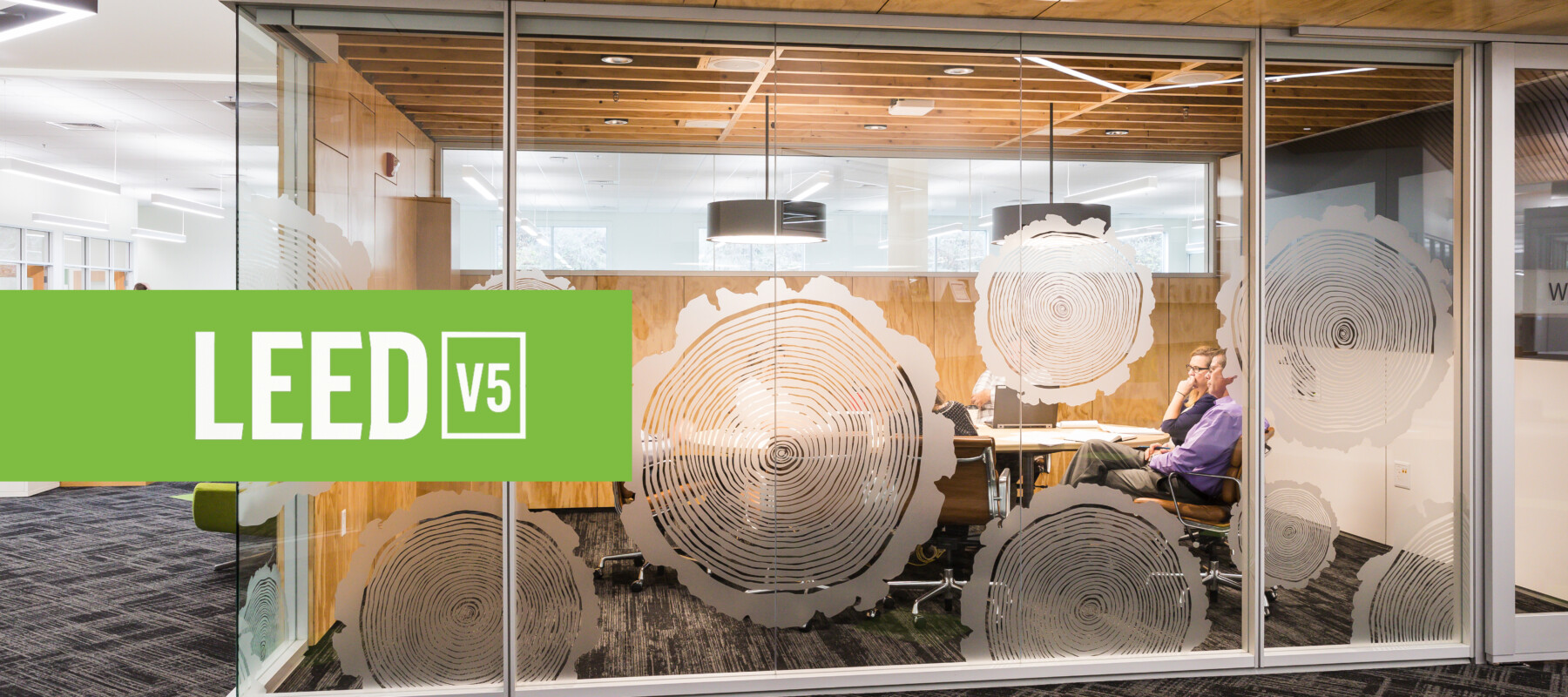October 9, 2023
(press release)
–
For the first time in more than 10 years, the United States Green Building Council (USGBC) is preparing a major update to the LEED rating system that scores buildings for being healthy, highly efficient spaces where humans live, work and play. To date, there are more than 185,000 LEED projects in 180 countries worldwide. Roseburg recently attended the Greenbuild Conference & Expo in Washington, D.C., where USGBC was celebrating their 30-year anniversary. This event gave attendees a sneak peek at what to expect in this new version, LEED v5, which is expected to be available for public comment in 2024. The new version of LEED has three system goals, which comprise the new scoring breakdown: This new scoring breakdown also means significant changes to the LEED scorecard, which USGBC also previewed at Greenbuild. While the v5 update is still just a draft, USGBC and LEED working groups have clear, strong, and bold goals woven throughout this update. While previous versions of LEED might have been known mostly for promoting energy conservation and efficiency, this new version offers a broader, more holistic approach to designing green buildings. Some of the major themes of this significant update include: While the new version won’t go into effect until 2025, Roseburg will be prepared to offer public comment in 2024 as we learn how the LEED v5 updates will potentially affect our customers and specifiers of our products. Read on to learn more about our takeaways from USGBC’s announcements about LEED v5. Resiliency Thanks to the threats posed by climate change, as well as recent events like the COVID pandemic and rampant wildfires, the new version of LEED places a large emphasis on the resiliency of a building in the face of disaster, but especially within the context of the greatest natural disaster risks of a building’s specific region. For example, a building designed to withstand natural disasters and serve as a community resource in the aftermath of a disaster, such as hurricanes and flooding in Florida, or earthquakes and wildfires in California, could earn LEED credits under LEED v5. Equity Diversity, equity, and inclusion work is being prioritized in LEED v5. In order to get the most points in this arena, project teams will have to prove that they’ve considered things like the race, income, access to greenspace, and disabilities of the people expected to spend time in their buildings. Occupant Needs LEED also encourages designers and developers to think outside the box (and the building) when considering the needs of all life (not just humans) and how the built environment affects them. USGBC is also clear that “occupant needs” encompasses anyone who passes through that building, whether they’re a resident, a full-time employee, or even an independent contractor. Decarbonization By far, the biggest focus of LEED v5 is decarbonization. Beyond just energy efficiency, it’s focused on reducing carbon in every aspect of the built environment, from operational sources of carbon, like onsite combustion and the use of potentially harmful refrigerants, as well as a building’s embodied carbon, which measures the total carbon emitted during the construction of a building, all the way upstream to the extraction and manufacture of materials. Crucial to decarbonization will be the use of Environmental Product Declaration (EPD’s) and whole-building Life Cycle Assessments (or LCA’s), two important documents that teams can use to document and measure the carbon impacts of their projects. Additionally, a portion of the Inflation Reduction Act (about $4 billion) is set to supplement decarbonization of federal buildings, as well as funding a construction material program for manufacturers to produce EPDs, which can often be expensive and time-consuming to compile. What About Existing Buildings? According to USGBC, 60 to 75% of greenhouse gas emissions in rural communities come from existing buildings, and the v5 update also includes an update to credits and the scorecard for existing buildings (LEED v5 O + M) to reward existing buildings that are on the road to ultra-low carbon. In fact, USGBC will beta test LEED v5 with O+M first. Looking to the Future LEED is moving to a new five-year update cycle to better align with the Paris Climate Accord’s 2030 and 2050 targets, which are key drivers in many regional and jurisdictional policies. This new update cycle will make it easier and clearer for LEED users who are working within the Paris Climate Accord’s targets. This update also aims to strike a fair balance between being accessible to anyone who wants to earn LEED certification while also challenging the status quo. “We want more people entering the path and making the effort,” said Alicia Silva from Revitaliza Consultores, who helped to develop LEED v5 O + M. Have questions? We’re here to help! We have LEED Green Associate credentialed professionals on staff who are available to help you navigate LEED v4.1 and beyond.
Key Terms

Dawn Garcia, LEED® Green Associate™
DawnG@rfpco.com
Dawn is part of the Marketing team for Roseburg and has been with the company since 2012. She oversees our LCA/EPD work as well as assisting the supply chain and design/build community with their questions related to green building documentation and submittals. She also serves on industry association committees for the Composite Panel Association (CPA) and American Wood Council (AWC) and is involved with the Decorative Hardwoods Association (DHA).

Bret Hartsfield, LEED® Green Associate™
Bret.Hartsfield@rfpco.com
Bret is part of the Technology and Optimization team for Roseburg and has been with the company since 2020. He oversees/assists with the technical information found in documents such as EPD’s and disclosure information. He also serves on the production-technical committee and certification oversight board for the Composite Panel Association.

Matt Sevits, Digital Marketing Manager
Matt.Sevits@rfpco.com
Matt Sevits works on the Marketing team with Dawn and attended Greenbuild for the first time in 2023. This professional development opportunity gives him crucial insight into the intersection of the LEED program with how Roseburg, and our industry as a whole, presents our product marketing in a responsible and ethical way.
* All content is copyrighted by Industry Intelligence, or the original respective author or source. You may not recirculate, redistrubte or publish the analysis and presentation included in the service without Industry Intelligence's prior written consent. Please review our terms of use.




